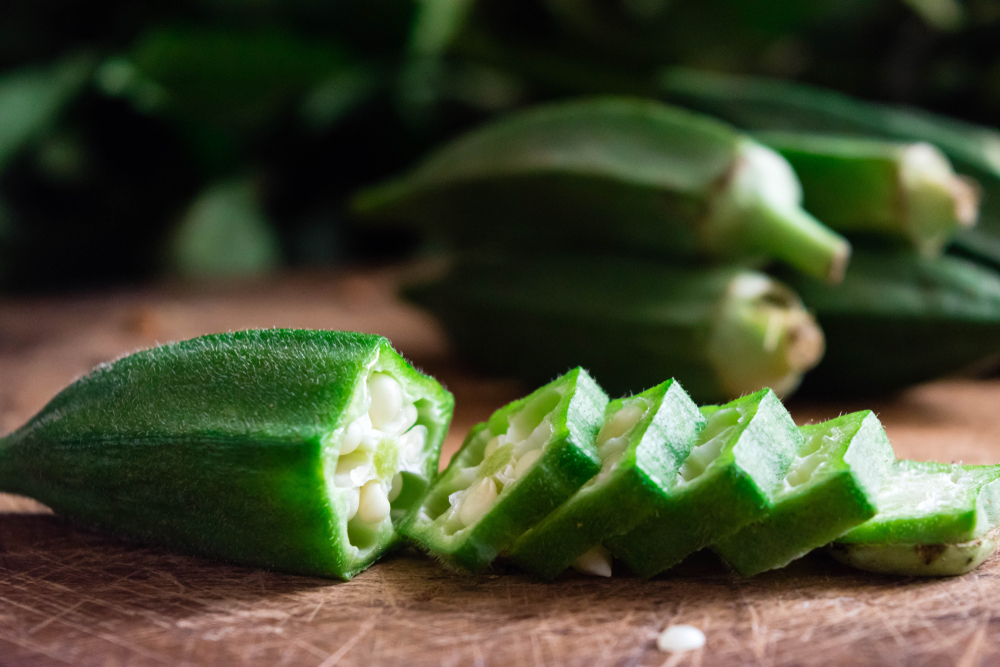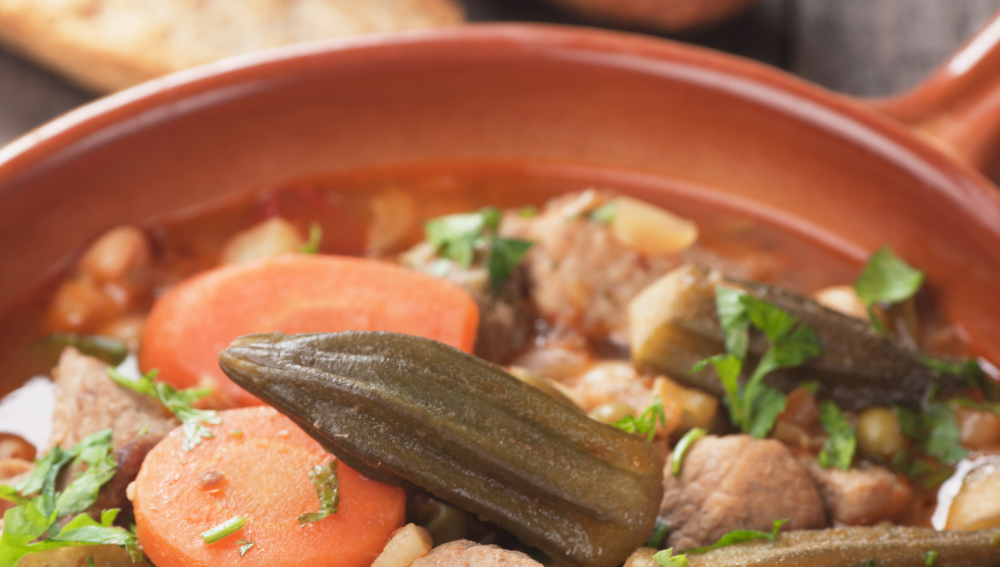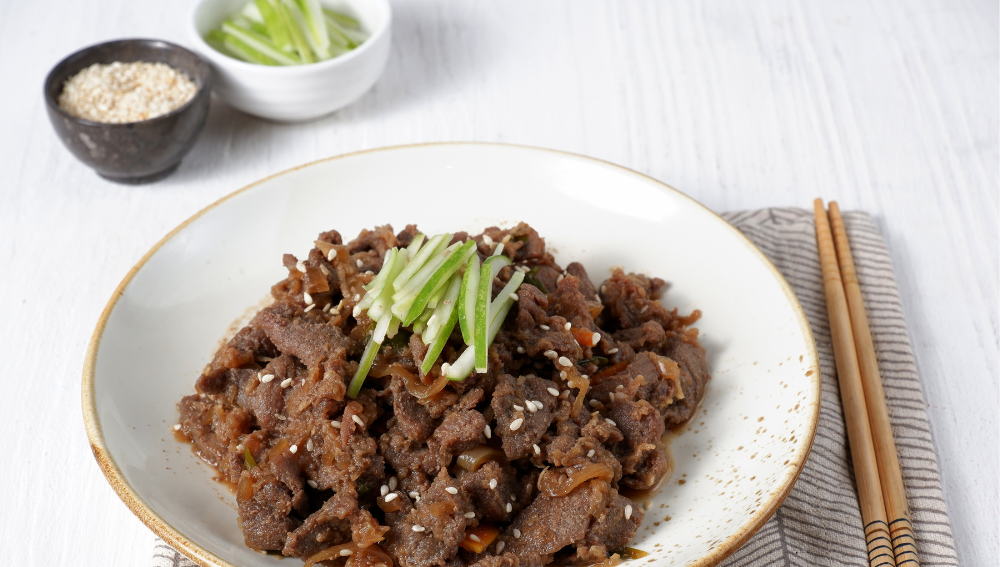I have always been curious about the taste of nopales, also known as cactus pads.
These prickly vegetables are a staple in Mexican cuisine and are becoming increasingly popular in other parts of the world due to their unique taste and nutritional benefits.

Nopales have a mild, slightly tart taste with a crunchy texture that is comparable to green bell peppers or okra. They are often used in salads, soups, stir-fries, tacos, and quesadillas.
When diced, they resemble green peppers and can be substituted for them in recipes.
Overall, nopales are a versatile and nutritious ingredient that can add a unique flavor and texture to many dishes.
Whether you are a fan of Mexican cuisine or just looking to try something new, nopales are definitely worth a try.
Key Takeaways
- Nopales have a mild, slightly tart taste with a crunchy texture that is comparable to green bell peppers or okra.
- They are often used in salads, soups, stir-fries, tacos, and quesadillas and can be substituted for green peppers.
- Nopales are a versatile and nutritious ingredient that can add a unique flavor and texture to many dishes.
Understanding Nopales
As someone who has tried and cooked nopales before, I can confidently say that nopales are a unique and tasty vegetable.
Nopales are the edible pads or leaves of the prickly pear cactus, also known as the nopal cactus or Opuntia ficus-indica.
They are commonly used in Mexican cuisine, but can also be found in other Latin American and Mediterranean dishes.
Nopales have a slightly tart, green bean-like flavor with a crunchy texture comparable to green bell peppers or okra.
They are also quite mild in taste, with a citrus undertone. When cooked, they become softer and denser, like steamed okra.
To prepare nopales, you need to first remove the spines and prickly glochids from the paddles. You can do this by using a vegetable peeler or a sharp knife.
After that, you can slice them into strips or dice them into small pieces. Nopales can be eaten raw or cooked, and are often boiled or grilled.
Aside from their unique taste, nopales are also known for their nutritional benefits. They are high in fiber, which can help regulate digestion and lower cholesterol levels.
They are also a good source of vitamins A and C, as well as minerals like calcium and potassium.
In conclusion, nopales are a tasty and nutritious vegetable that can add a unique flavor and texture to your dishes.
Whether you are a fan of Mexican cuisine or just looking to try something new, I highly recommend giving nopales a try.
Taste Profile of Nopales

Nopales are a popular ingredient in Mexican cuisine, and they have a unique flavor that complements many dishes.
As someone who has tasted nopales, I can confidently say that they have a mild flavor with a slightly bitter and tart taste. The taste is refreshing and mildly vegetal, with a hint of sweetness.
When compared to other vegetables, nopales are quite bland and don’t pack a flavor punch. However, their unique flavor profile adds a distinctive element to dishes, balancing and enhancing the overall taste.
Nopales have a slightly slimy texture, which some people may find off-putting. However, this texture can be minimized by properly preparing and cooking the nopales.
To prepare nopales, first, remove the spines and slice them into strips or cubes. You can then grill, sauté, or boil them, depending on your preference.
In terms of taste, nopales have been compared to asparagus, green beans, and okra. They also have a citrus undertone, which adds a tangy flavor to dishes.
Overall, nopales are a versatile ingredient that can be used in many different ways. Their unique taste and texture make them a popular ingredient in Mexican cuisine and beyond.
Texture and Consistency
Nopales have a unique texture that is crunchy and tender at the same time. When cooked, they become soft and slightly slimy, similar to cooked okra.
The outer layer of the cactus pad is smooth and slightly rubbery, while the interior flesh is juicy and tender.
The texture of nopales can vary depending on how they are prepared. If they are boiled or grilled, they will have a slightly crispy texture on the outside and a tender, juicy texture on the inside.
If they are cooked in a stew or soup, they will absorb more liquid and become softer and more tender.
It is important to note that the spines on the outer layer of the nopales should be removed before cooking, as they can be painful if ingested.
Once the spines are removed, the nopales can be sliced and cooked in a variety of ways.
In terms of taste, nopales have a slightly tart, green bean-like flavor that is complemented by their unique texture.
They are often used in Mexican cuisine, where they are added to tacos, salads, soups, and stews. Overall, the texture and consistency of nopales make them a versatile ingredient that can be used in a variety of dishes.
Culinary Uses of Nopales
As a staple in Mexican cuisine, nopales are used in a variety of dishes and preparations. Here are some of the most common culinary uses of nopales:
Salads
Nopales can be boiled and sliced to add to fresh salads or as a standalone salad ingredient. Their crunchy texture and slightly citrusy taste make them a great addition to any salad.
Try combining them with other fresh vegetables like tomatoes, cucumbers, and onions for a delicious and healthy salad.
Tacos
Nopales can be sautéed and added to tacos for a unique and flavorful twist on a classic dish.
They pair well with other taco ingredients like beans, cheese, and meat, and can be seasoned with spices like cumin, chili powder, and garlic.
Soups and Stews
Nopales are also used in soups and stews, including traditional Mexican dishes like menudo and posole.
They add a unique flavor and texture to these hearty dishes, and can be combined with other ingredients like meat, beans, and vegetables.
Grilled and Baked
Nopales can be grilled or baked for a smoky and delicious flavor. They can be seasoned with spices like paprika, cumin, and garlic, and make a great side dish for grilled meats or roasted vegetables.
Pickled
Nopales can be pickled for a tangy and flavorful addition to sandwiches, salads, and more. They can be combined with other pickled vegetables like carrots, onions, and jalapeños for a delicious and crunchy snack.
Juice
Nopales can be juiced for a refreshing and healthy drink. They are high in antioxidants and vitamins, and can be combined with other fruits and vegetables like pineapple, cucumber, and ginger for a delicious and nutritious juice.
Overall, nopales are a versatile and delicious ingredient that can be used in a variety of dishes and preparations.
Whether you’re grilling them, pickling them, or adding them to soups and salads, nopales are sure to add a unique and flavorful twist to any meal.
Comparing Nopales with Other Foods

As someone who has tasted nopales, I can confidently say that its taste can be compared to several other foods. Here are some of the foods that have a similar taste to nopales:
- Okra: Nopales have a mild mix of bitter and tart flavor with a citrus undertone, which is similar to the taste of okra. However, nopales have a crunchier texture compared to okra, which can be slimy when cooked.
- Asparagus: Nopales have a slightly tart taste, which is similar to the taste of asparagus. However, nopales have a crunchier texture compared to asparagus, which can be soft and tender.
- Green beans: Nopales have a green bean-like flavor, which is slightly tart and bitter. However, nopales have a crunchier texture compared to green beans, which can be softer and tender.
- Bell peppers: Nopales have a green pepper-like appearance when diced, which is why they are often substituted for bell peppers. However, the taste of nopales is slightly tart and bitter, which is different from the sweet taste of bell peppers.
- Zucchini: Nopales have a crunchy texture, which is similar to the texture of zucchini. However, the taste of nopales is slightly tart and bitter, which is different from the mild taste of zucchini.
- Onion: Nopales have a slightly tart taste, which is similar to the taste of onion. However, nopales have a crunchier texture compared to onion, which can be soft and tender.
- Watermelon: Nopales have a slightly tart taste, which is similar to the taste of watermelon. However, nopales have a crunchier texture compared to watermelon, which can be juicy and soft.
- Tuna: Nopales are often used in Mexican cuisine as a side dish for tuna. The slightly tart taste of nopales complements the mild taste of tuna, making it a perfect combination.
In summary, nopales have a unique taste that can be compared to several other foods.
Its slightly tart and bitter taste with a citrus undertone, and crunchy texture make it a versatile ingredient that can be used in various dishes.
Health Benefits and Nutritional Content
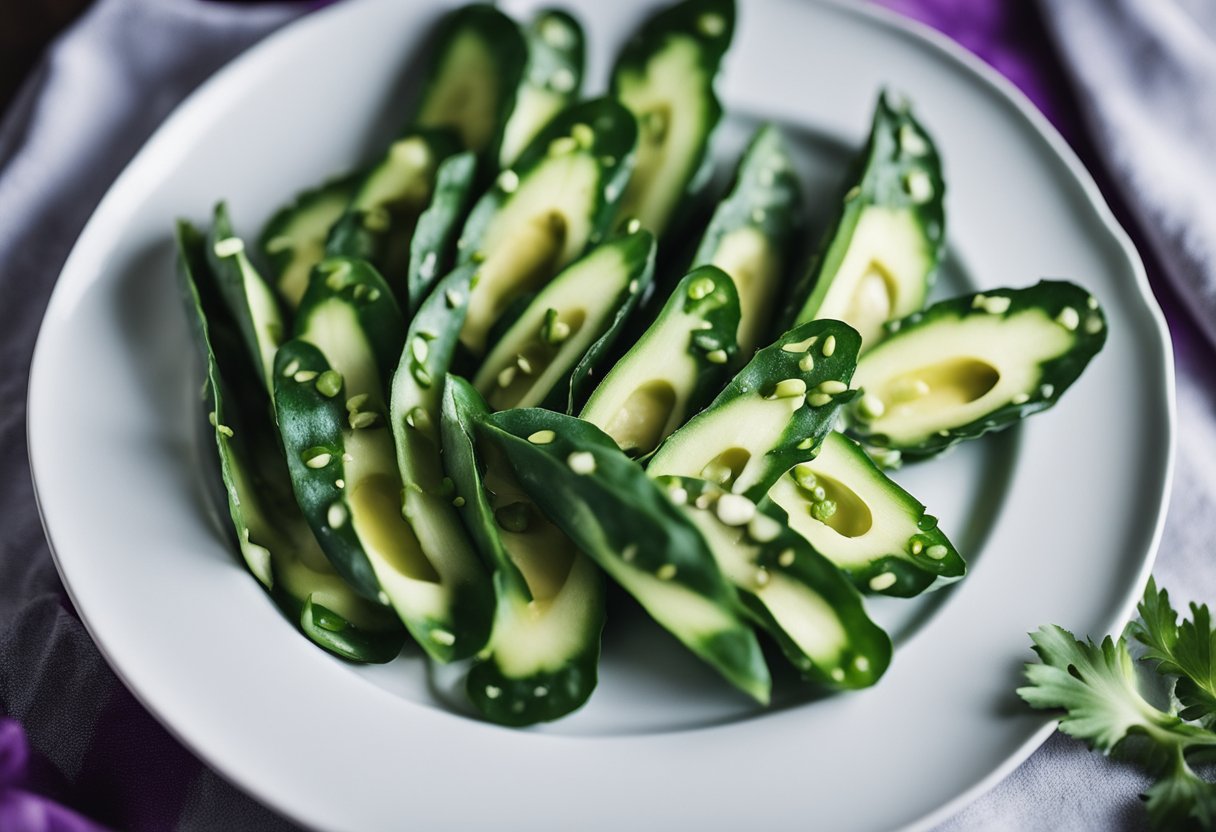
As a nutritionist, I can confidently say that nopales are a nutritional powerhouse with a wide range of health benefits. They are low in calories and high in dietary fiber, making them an excellent addition to any balanced diet.
Nopales are also rich in vitamins and antioxidants, particularly vitamin C, which helps boost the immune system and protect against disease. In fact, just 100 grams of nopales contain 15% of the recommended daily intake of vitamin C.
In addition to vitamin C, nopales are also a good source of minerals such as magnesium and potassium.
Magnesium is essential for maintaining healthy bones and muscles, while potassium helps regulate blood pressure and supports heart health.
The high fiber content of nopales can also help regulate blood sugar levels, making them an excellent choice for individuals with diabetes. Additionally, the fiber in nopales can help promote digestive health and prevent constipation.
Overall, incorporating nopales into your diet is an excellent way to boost your nutrient intake and support overall health.
Harvesting and Preparation of Nopales
As someone who has grown up eating nopales, I know firsthand that the preparation and harvesting of this ingredient can affect its taste and texture.
When it comes to harvesting nopales, it is important to note that the season and the spines can play a role in the quality of the ingredient.
Nopales are typically harvested in the spring and early summer when they are at their freshest. When harvesting, it is important to wear gloves and use tongs to avoid getting pricked by the spines.
The spines can be removed using a sharp knife or vegetable peeler, or by burning them off over an open flame. Once the spines have been removed, the nopales can be washed and prepared for cooking.
When buying nopales, it is important to look for fresh nopales that are firm and free of blemishes. Raw nopales have a slightly tart, green bean-like flavor with a crunchy texture comparable to green bell peppers or okra.
The cooking method will have a significant impact on the nopale pad’s flavor, like with many ingredients.
There are many ways to cook nopales, including grilling, boiling, sautéing, and pickling. Boiling nopales with onions and garlic is a popular way to prepare them for salads, while grilling or baking them with olive oil, salt, and pepper can enhance their flavor.
Nopales can also be added to breakfast eggs, lunch tacos, or dinner stews for a delicious and nutritious addition to any meal.
In summary, the season, spines, and preparation methods can all affect the taste and texture of nopales. When harvesting, it is important to wear gloves and use tongs to avoid getting pricked by the spines.
When buying, look for fresh nopales that are firm and free of blemishes. Finally, there are many ways to cook nopales, so try experimenting with different methods to find your favorite way to enjoy this versatile ingredient.
Nopales in Different Cultures
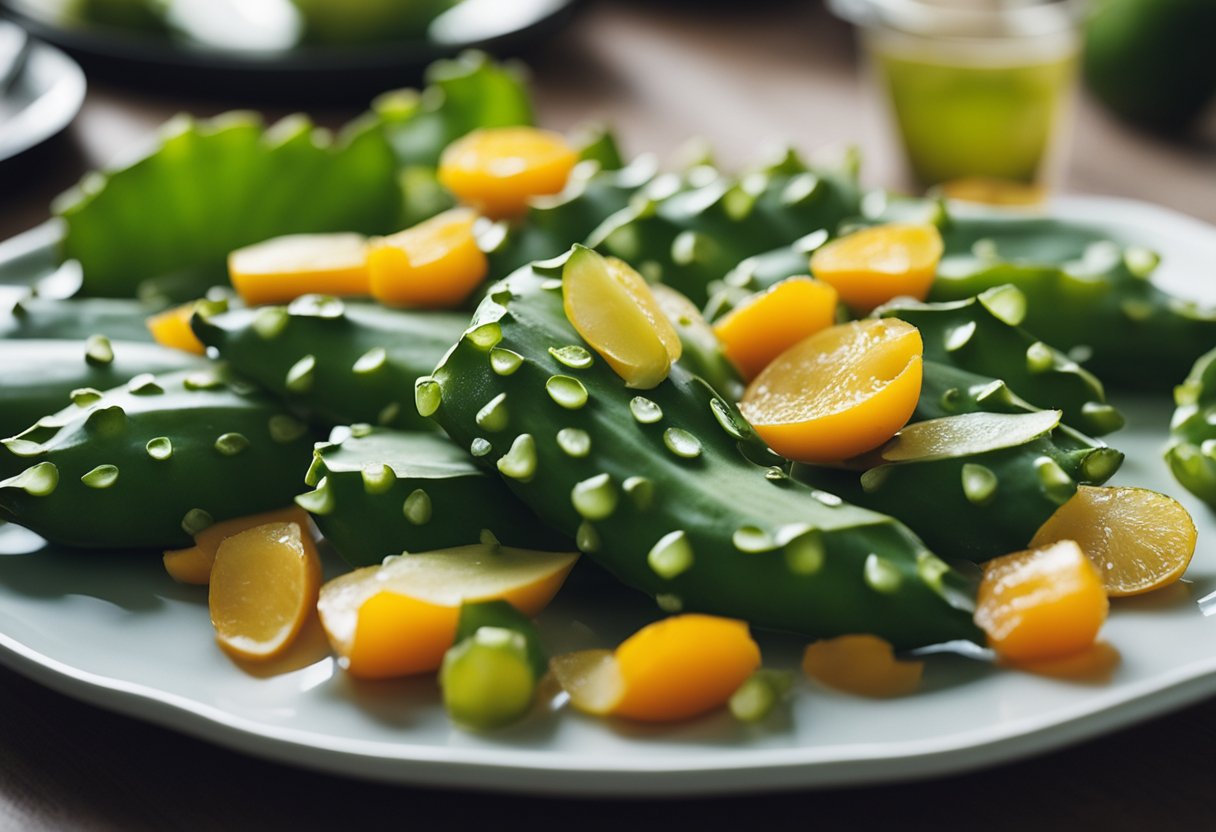
As a popular ingredient in Mexican cuisine, nopales have been enjoyed by the locals for centuries. Mexican people often use nopales in a variety of dishes, from soups and stews to salads and tacos.
The tart and slightly slimy texture of nopales makes them a unique and versatile ingredient in Mexican cuisine.
In the United States, nopales are also popular among the Hispanic community. Many Mexican-American households include nopales in their meals as a way to connect with their cultural roots.
In addition, nopales have become more widely available in grocery stores across the country, making them accessible to people of all backgrounds.
In Europe, nopales are not as well-known as they are in Mexico and the United States. However, they have become more popular in recent years as people become more interested in trying new and exotic ingredients.
Nopales are often used in vegetarian and vegan dishes as a meat substitute, as they are rich in nutrients and have a meaty texture when cooked.
Overall, nopales are a unique and versatile ingredient that can be enjoyed in a variety of cultures and cuisines.
Whether you are looking to connect with your Mexican roots or try something new and exotic, nopales are definitely worth a try.
Enhancing the Taste of Nopales
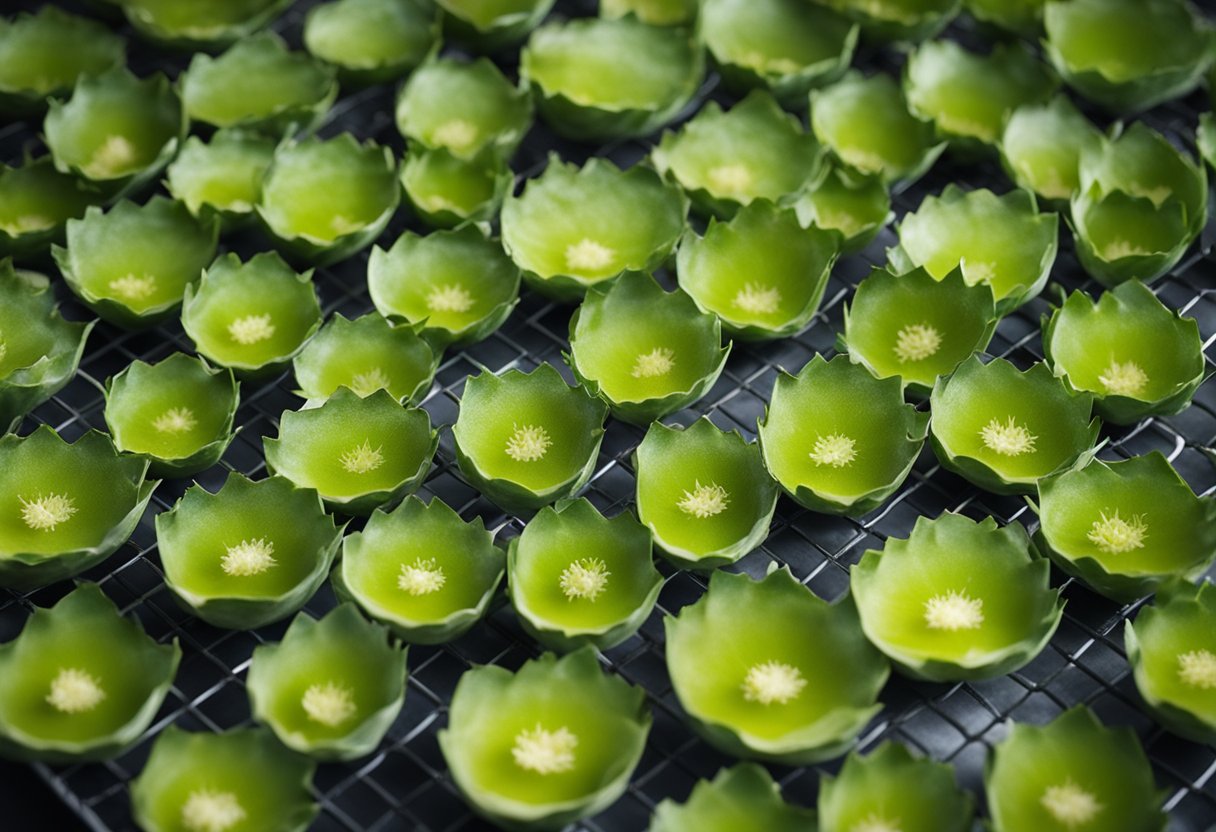
As someone who has tasted nopales, I can say that while they have a unique flavor, they can be a bit bland on their own.
However, there are several ways to enhance the taste of nopales and make them more enjoyable to eat.
One way to add flavor to nopales is to season them with salt. Adding a pinch of salt can bring out the natural flavors of the nopales and make them taste less bland.
However, it’s important not to overdo it with the salt, as it can overpower the taste of the nopales.
Another way to enhance the taste of nopales is to add lemon juice. The acidity of the lemon juice can complement the mild flavor of the nopales and give them a tangy kick.
It’s important to note that too much lemon juice can make the nopales taste sour, so it’s best to add it in small amounts and taste as you go.
Olive oil is another ingredient that can be used to enhance the taste of nopales. Drizzling a little bit of olive oil over the nopales can add a rich, savory flavor and make them taste less dry. It’s important to use high-quality olive oil for the best results.
Garlic is another ingredient that pairs well with nopales. Adding minced garlic to the nopales can give them a savory, slightly spicy flavor that complements their mild taste.
It’s important to sauté the garlic before adding it to the nopales to ensure that it’s fully cooked and doesn’t have a raw taste.
Paprika is a spice that can add a smoky, slightly sweet flavor to nopales. Sprinkling a little bit of paprika over the nopales can give them a unique taste that’s different from the usual mild flavor.
It’s important not to use too much paprika, as it can overpower the taste of the nopales.
Finally, adding a squeeze of lime to the nopales can give them a bright, citrusy flavor that complements their mild taste. Like with lemon juice, it’s important not to use too much lime juice, as it can make the nopales taste sour.
Overall, there are several ways to enhance the taste of nopales and make them more enjoyable to eat. By using ingredients like salt, lemon juice, olive oil, garlic, paprika, and lime, you can add flavor and variety to this unique vegetable.
Frequently Asked Questions
What is the taste of grilled cactus?
Grilled cactus, or nopales, have a slightly tart flavor with a crunchy texture similar to green bell peppers or okra. The grilling process adds a smoky flavor to the cactus, which enhances its taste.
How does prickly pear taste?
Prickly pear, which is the fruit of the cactus plant, has a sweet and juicy taste that is similar to watermelon or pear. The flavor is often described as a mix of strawberry and watermelon with a hint of kiwi.
What are the similarities in taste between cactus and other foods?
Cactus has a mild flavor that is often compared to green beans, asparagus, or okra. However, the taste of cactus is unique and cannot be compared to any other food.
What is the taste of grilled nopales?
Grilled nopales have a slightly smoky flavor that enhances their natural taste. The texture is crunchy and the flavor is slightly tart, similar to green bell peppers or okra.
Is it safe to eat raw nopales?
Yes, it is safe to eat raw nopales. However, raw nopales have a slimy texture that some people may find unappetizing. To reduce the sliminess, it is recommended to boil or grill the nopales before consuming them.
How do Mexicans typically prepare nopales?
Mexicans typically prepare nopales by boiling or grilling them and then chopping them into small pieces. They are often used as a filling for tacos or added to salads. Nopales are also commonly used in soups and stews.


